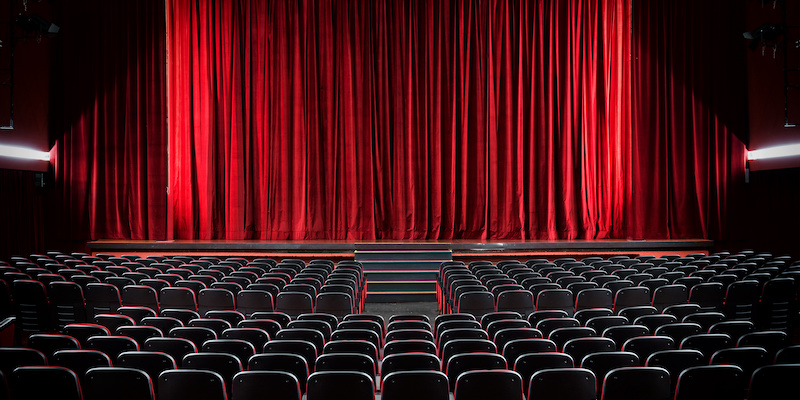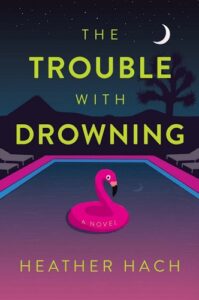I’ve always been a tremendous fan of thrillers, especially of the psychological variety. Whether on the page or on the screen, they rank amongst my favorite thing ever. (I can practically recite the entirety of Rear Window verbatim, with a convincing Grace Kelly, Jimmy Stewart or Thelma Ritter impersonation, depending on the delivery.) I adore the way thrillers hold you in their palm, the way they allow you to exorcize terror—and lord knows we’ve got a lot of it these days—in a fun, safe way. Suspense is the lynchpin for the medium, the art of dialing up the tension to hold an audience captive.
During Covid, I started inhaling psychological thrillers whole. They were potently escapist and so helpful in blocking out the noise of the world. I held onto my mental health, ironically, by chronicling the decline of someone else’s on the page in my debut novel The Trouble With Drowning. I got to explore the darkness we all felt during this bleak time, and it was safe. Contained. Creepy and fascinating. Obsessive and dark.
But the genre is new to me. I am fortunate enough to have written in several mediums including film, television and theater. Along the way, I’ve made people dance and sing at Harvard (Legally Blonde the Musical), have a mother and daughter switch places (Friday Freaky), and in my new novel, have a young woman battle obsession and unravel completely. While this tonal shift from light to dark is a departure, it isn’t as jarring to me. I love the sunshine of Elle Woods, but I also adore the malicious fun of Hannibal Lecter. My gloomier side has always been tapping on my skull, eager to get out. With my debut novel, I’m veering down a dimmer corridor.
Embarking on the new challenge of writing a psychological thriller, I was excited but also overwhelmed with doubt. Besides voraciously reading them, what did I know? And how would possibly I tamp down my desire to make everyone sing? (Kidding, but not really.) Mostly, how do I harness the necessary suspense for a thriller within a form so different from what I’m accustomed to crafting? Then I realized something that was huge but also completely grounding: Whatever format it takes, a story is a story. That’s it. Regardless of the format, dive in and get messy. Building suspense within each genre is wildly different yet oddly universal.
Because truly, the same questions apply. How do you hold an audience? Suspense is tantamount for thrillers—frankly, the raison d’etre—but it’s not the obvious driving engine that’s within my former more comedic work. The tension in Legally Blonde is whether Elle will get into Harvard, but more important, will she find out she’s more powerful than she ever knew. (Certainly stronger than her douf ex-boyfriend). That’s a wildly different conflict than writing about someone fighting mental illness, as is my novel’s main character Kat. Elle’s actions are rooted in finding herself, confronting obstacles (namely, a turd of a sexist professor) and elevating herself by winning the legal trial. Most actions in a musical are triumphing over obstacles toward fulfillment, leading toward a happier ending. Thrillers’ tension is rooted in characters making awful choices, often shocking ones, that engage the audience. Kat’s actions are driven by her negative, obsessive qualities, Elle’s are permeated with optimism. So much of the tension itself is rooted in the character’s motivations.
Writing is the peculiar dance that requires you to at once turn your brain to full volume and also not think at all. To trust yourself and flow. Whichever medium, they demand the same commitment and require the creation of a main character who people will eagerly go on a journey with. It’s all desperately complicated but also quite simple, too. Writing is filled with endless contradictions.
In a screenplay, you use words economically to paint a movie in the reader’s mind, you want the scenes to come alive as if they’re not just reading scenes but seeing them play out. The pages should feel as if they turn themselves. There’s a rat-tat-tat to screenplays, you’re ideally creating movement, pushing the story forward. It’s a highly specialized skill, and one I’m relieved it seems the Alliance of Motion Picture and Television Producers are ready to protect for we writers in the Writer’s Guild! Now it’s time to fairly compensate our sister union, SAG-AFTRA, and the actors who bring our words to life.
On stage, you’re dealing with a closed space, and you’ve also got to really move without having people move all that far. It’s tight, it’s clean, and the action has to also sing. Musicals are all about pacing, all about rhythm and magic.
What I found so liberating about crafting my new novel was the way I could drop in and really linger. I could luxuriate in the characters, in their thoughts, in the details. Also, because it’s a thriller, I was allowed to go dark and let Kat go mad. I also had the time to build the stakes, and by slowly turning up the tension allowing Kat to make truly terrible decisions, it was a shot in the arm to be afforded this freedom.
Still, I hope the musicality I tried to infuse in my writing on Legally Blonde will also be apparent within The Trouble With Drowning. The rhythm is different, but the quest is the same—tell a story, and tell it well. Use suspense to keep the audience entirely invested and make them need to turn the page. Strive to inspire readers to keep the bedside lamp on a wee bit longer to inhale just a few more pages. Turn up the conflict so the audience simply must know what happens next. Walking that fine line between literary subtlety—one joy of fiction—and the explosion, propulsive action of psychological thrillers is the sweet spot I’m aiming for.
***


















